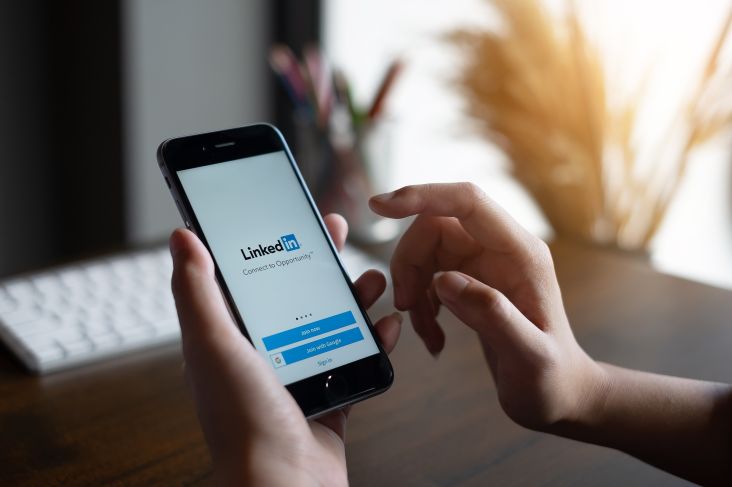How to tackle unexpected prospective clients, and avoid working with unsuitable ones
When you freelance, you'll often get unexpected calls or emails from people needing your support. You're not sure how they found you, but they're suddenly there.

Image licensed via Adobe Stock
How do you ensure these prospective clients aren't going to waste your time? You know, those who don't have the right budget, fight you on price, think they know better or want to pick your brains to steal your ideas.
It's not easy identifying whether a surprise enquiry will make an ideal client, someone who will listen, pay on time and be happy to invest in quality work. But you can use the following top tips to screen out any difficult time wasters.
Get your branding right
If you want to be taken seriously and attract 'quality' clients, then you have to present the right kind of image. Look at your logo, website and social media, and consider the overall tone of your branding. Is it professional? Do you look 'busy' and successful? Can you be taken seriously? Determine whether you can improve your branding to keep unwanted clients at bay.
Do your research
Now that prospects have discovered you, there's no harm in doing your homework on potential clients. Check out their websites and social media profiles. Do a simple search on Google or find relevant contacts on LinkedIn. Go on Companies House to do some further digging and see if they're legitimate. This initial research will help you to determine your next move, i.e. whether you'll set up a meeting or politely decline and move on.
Consider exposing your rates
If you want to filter out time-wasting clients, why not consider adding your daily and hourly rates to your website? It will ensure you only get approached by people who are prepared to pay your rates. However, this isn't the best way to screen prospects because you could put fantastic clients off before you've even had a chance to talk to them and sell yourself.
Draft convincing web copy
As most people do their research online these days, you'll want to make sure your website has the right copy to sell yourself and attract new business. Your 'About' page is probably the most important, so ensure you provide a professional bio that includes all your best skills and experience. Sell yourself, show off your qualifications and convey how passionate you are about your work.
With regards to the overall tone, consider the audience you'd like to attract – for instance, if you want to work in finance, you should go for a more corporate approach – if you're going to work in the creative industries, you can afford to be more informal and creative. For further advice, read our article on how to write about your authentic self.
On initial contact, ask questions
When someone contacts you, thank them for getting in touch and then ask them how they found out about you and whether they've hired someone for similar work before. You want to get a better understanding of why they've picked you. You might find that the prospect is just ringing around ten other freelancers or small agencies to get a price and price alone. Or you might find that you're the sole business they've approached. Do some polite digging to get a better idea of whether the client is worthy of your time.
Ask for a project brief
A great way to screen out bad clients is to ask for a detailed 'brief'. Ones who are serious will be happy to take the time to answer your questions and provide all the information you need. Ones who don't tend to say 'I want a website with five pages, how much?'. Request a project brief and see how you go.
Never discuss pricing over the phone
If the client is asking for your rates over the phone, never reveal them! Inform the prospect that you need time to come up with a detailed proposal for them to consider. Even better, why not suggest a meeting in person? Explain that you'd like to meet face-to-face to get a better feel for the project in question. It acts as another screening process and will determine whether a potential client is serious.
Create a proposal
Now that you know the prospective client isn't wasting your time; you should come up with a killer proposal that seals the deal. It should be a professional document, no longer than four A4 pages, that sets out the following:
Introduction: On the front cover, add the business name, client contact and your name along with the name of the project. You should also add the date (more on this later).
Project Overview: The first section should include full details of the brief. It helps to demonstrate to your client that you understand the goals of the project.
Project Objectives: This section should bullet point, in summary, the key objectives of the project, again to show you understand the work in question.
Proposed Services: Here, you should outline what you plan to do and the services you'll provide to achieve the project objectives. Be as detailed as possible to future-proof yourself against a client trying to add more to the project.
Schedule for Delivery and Pricing: This is quite simple – you write 'Based on our proposal, this work will cost £X' and you make clear that any additional work will cost extra based on your hourly rate. You also have to provide a schedule for delivery, i.e. a realistic timeframe on when the project can be completed.
Terms of Payment: It's crucial that you describe your payment terms at this early stage. For example, 50% payment required upfront before work begins. Or you might need to mention your preferred payment method, i.e. BACS transfer or cheque only. It's also a good idea to include a clause that your rates go through annual or bi-annual rate reviews and are not static. It means you can increase your rates in future without any objections.
Sell-by-Date: Finally, give your proposal document a sell-by-date, i.e. Explain that the proposal and quote are only valid for 30 days, from the date shown on the front of the document. It protects you from a client coming back to you 12 months later to give you the go-ahead – only your rates have since gone up.
Keep it slick
Don't forget to save your proposal documents for future reference. Another final tip – I usually create my proposals in InDesign and then save them as PDFs. It just adds that additional professional touch.




 by Tüpokompanii](https://www.creativeboom.com/upload/articles/58/58684538770fb5b428dc1882f7a732f153500153_732.jpg)

 using <a href="https://www.ohnotype.co/fonts/obviously" target="_blank">Obviously</a> by Oh No Type Co., Art Director, Brand & Creative—Spotify](https://www.creativeboom.com/upload/articles/6e/6ed31eddc26fa563f213fc76d6993dab9231ffe4_732.jpg)

















